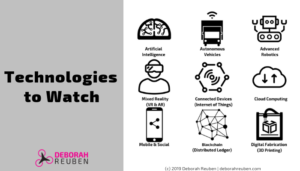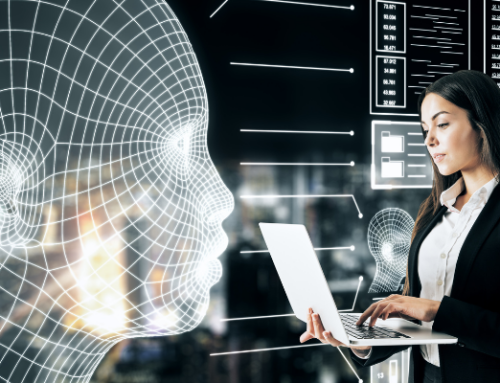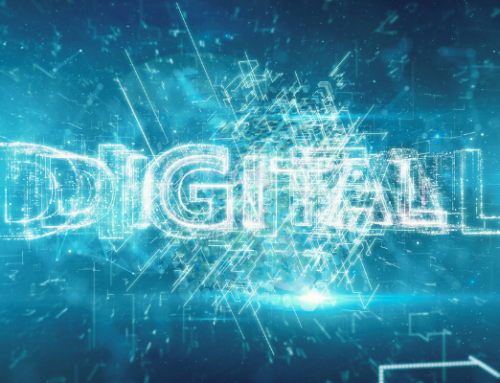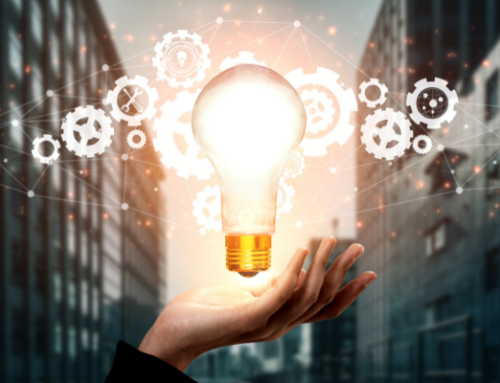
The world of advancing technologies can be overwhelming if you are just beginning to dive in. However, there is no better time to start than now!
Knowledge of these technology categories can raise your awareness, stretch your thinking, and spark provocative, imaginative, future-oriented thoughts specific to your industry. While expertise in these technologies is not a requirement, for leaders, it is important to develop an awareness of these topics – framing your thinking, as you consider the future of your business.
Artificial Intelligence (AI)
More than a single technology, Artificial Intelligence (AI) is a branch of computer science, that you could think of as a “family of technologies”. We commonly define the term “AI” as the ability of a machine to perform cognitive functions associated with human minds. Examples of AI technologies include robotics, autonomous vehicles, machine vision, language processing, virtual agents, and machine learning. AI technology drives many of the advances in other technology categories.
Autonomous Vehicles
Powered by advances in machine intelligence, this category includes autonomous cars, buses, trucks, drones, marine, and other vehicles operated by machine intelligence rather than a human driver.
Advanced Robotics
This category includes physical and virtual automation such as industrial robots, collaborative robots (co-bots), and robotic process automation (RPA) which is software for automating repetitive tasks (think of a macro on steroids).
Mixed Reality (AR & VR)
In all cases, a device is necessary to enable the experience. Virtual Reality (VR) uses special goggles that block visibility of the real world, allowing you to step out of the physical world and experience a virtual world. In contrast, Augmented Reality (AR), is a computer-generated overlay of digital elements on top of the physical reality that you see, using devices such as special glasses (Google Glass, Magic Leap) or your smartphone (Pokémon Go). Mixed Reality is a form of augmented reality that falls somewhere between virtual and augmented reality. Mixed Reality augments the real world with virtual objects that aim to look as though they were placed in that world.
Connected Devices (Internet of Things)
The Internet of Things (IoT) is a marketing term referring to the use of intelligently connected devices and systems that leverage data gathered by sensors in machines and other physical objects. According to a world economic forum report, there are more connected devices in the world today than there are humans. This number is expected to increase exponentially.
Cloud Computing
Cloud computing enables the running of workloads remotely (over the internet in a commercial provider’s data center) to access a pool of resources. It enables developers to access many capabilities for innovative application development, such as artificial intelligence, internet of things connectivity, and more; with the ability to start small and scale as needed. With its raw computing power and application functionality on-demand, cloud computing “levels the playing field” for accessing various emerging technology capabilities. Amazon Web Services (AWS) and Salesforce’s CRM system are examples of public cloud offerings.
Mobile & Social
There has been a worldwide explosion in connectivity since the introduction of the iPhone in 2007, followed by the rapid increase of social networks and mobile device advances. Professional and social digital interaction is now virtually ubiquitous without the old limits of time and space. At any time, we can easily find and connect with people of shared interests anywhere in the world. More and more people are going online every day: with about 5 billion mobile phone subscribers in the world as of 2017 (a figure expected to grow to nearly 5.9 billion by 2025, according to the trade group GSMA). The introduction of 5G connectivity is expected to deliver speeds 20 times faster than 4G with nearly undetectable latency. Imagine the impact of reliable and real-time anywhere connectivity.
Blockchain (Distributed Ledger)
A shared distributed ledger, blockchain is a linked list of encrypted transactions, stored across a network of computers. This network actively participates in the validation, upkeep, and accuracy of the database, and is rewarded for doing so in cryptocurrency. Bitcoin, a cryptocurrency, is an example of the application of a blockchain protocol.
Digital Fabrication
3D printing (also called additive manufacturing) enables the creation of complex products, without complex equipment, by printing a physical object, layer by layer, from a 3D digital model. Imagine creating a loaf of bread, slice by slice. The types of materials used in 3D printing continue to expand and the methods and capabilities continue to evolve. Eventually, a 3D printer will be able to do what a whole factory was once required to accomplish.
To get started with your exploration of these technologies, download the “Technologies to Watch” here.
With it you can document where you currently see these technologies trending, how they might impact your industry in the future, and the long-term and short-term implications of them.




